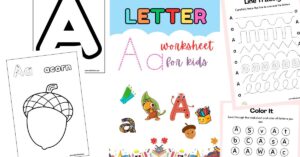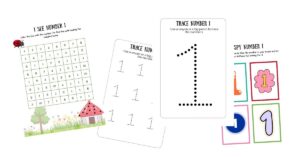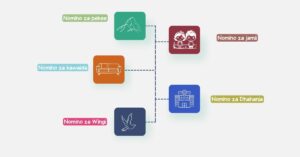17 months is a very interesting age, for lack of a better word. It is the transition to toddlerhood and an age where your baby has learned quite a few things about themselves and the world around them but not quite that well.
In other words, it is a critical learning and physical development age. How do you help with this development as a parent? Through play and other fun activities.
Activities for a 17-month-old baby should aim at strengthening the developmental milestones the child has made so far, in terms of mental and physical skills. But they should be simple as you will see from my suggestions below. More importantly, aim to have a little bit of fun with your kid and spend time together.
17-Month-Old Developmental Milestones
Walking
A 17-month-old child can now comfortably walk, run even, so they are running all over the house independently and trying to climb stairs and furniture. Also, the child has learned they can pick things up with their hands, so they are working on their motor skills.
Having a toddler walker push toy works wonders. Besides the many buttons your child will have, the push toy will keep them walking longer which is a plus.
Speech
A toddler’s understanding of language is also pretty good so they can understand most things you say to them and also say words. In fact, a child at this age can communicate pretty well, even if it’s not through words. They point at different things, pull you towards what they want to say and grunt to pass information.
Independence
The baby is also learning that they are a separate person so they want independence. You may notice they want to feed or dress themselves, and they are also less willing to be talked out of their preferences, unlike before.
Separation anxiety
With independence also comes the knowledge that mom can leave them behind. One-and-a-half-year-olds will throw tantrums or cry when you leave because they are anxious and also start fearing strangers or preferring one person over the other.
Emotions
A child’s feelings develop earlier, but they learn expression at this age. Many tantrums will come your way, and it’s the right time to teach them how to express different emotions in the right way before the terrific two.
Cause and effect
Finally, they have learned they can make things happen with their actions. For example, they know they can push a toy car, throw a ball, chase a bird away or throw a plate full of food on the floor. Your work here will be to help them get more confident in their doings while also teaching discipline.

Activities for Supporting a 17-Month-Old Development
1. Explore the Outdoors
Now that your baby can walk comfortably, outdoor play will be more fun. You can make it as easy as going around the block or visiting the local park or a nearby beach. You will notice the toddler frequently stopping to pick something up, look at something more closely and interact with nature. Do not rush them so they can enjoy every learning opportunity out there.
Encourage them to pick leaves and sticks, play with water, kick stray balls in the park and run around within reason. This will further develop the child’s sensory system and improve their visual, fine and gross motor skills.
Here are some leaf activities you can do with your toddler once you collect leaves during your walk.
Ensure you also take every opportunity to teach and talk to your child. When they pick up a stick, tell them it’s called a stick and have them repeat what you have said. It will not stick mentally on the first day, but it will soon enough with repetition. This is how you build language skills.
2. Play Bead Games
Speaking of visual, fine and gross motor skills, you also want to get into bead activities. Buy beads in various sizes, colors and shapes and put them in different containers.
There are so many activities you and your little one can do with beads, from sorting them into containers according to colors or shapes, making necklaces, pouring them on the floor and walking over them or rolling toys over them, and even making musical instruments.
As the child picks up, holds and manipulates the beads, their fine and gross motor skills develop. More so, creative play develops hand-eye coordination and other cognitive functions. Plus, this is a great way to teach colors and numbers.
For younger kids, be sure to buy large beads so as to avoid chocking hazards. You can also consider letters and number beads if they are ready to be introduced to learning.

3. Encourage Messy Play
Messy play is not just fun – it’s a great sensory activity that also develops a child’s fine motor skills, hand-eye coordination and cognitive skills.
My best medium for messy play is water. Fill a tub with warm water (or have a water table), throw a bunch of small toys and letters in there and include tongs, shovels and big spoons to scoop. I also add a touch of food coloring or bubbles in the water just for stimulation and to make water play more fun.
If you don’t have a tub, you can always grab a foldable pool. It will serve the same purpose.
Mashed potatoes, slime, shaving cream or a sensory bin with anything from colored rice to sand are also great messy play ideas. Allow the child to explore the textures with their hands and feet, manipulate the mediums, move them to different containers and create new things. Creativity and imagination will take center stage here.
And we can’t forget the play-dough. Invest in different textures and colors of play-dough and allow the child to have fun exploring and manipulating them. You can show them how to make figurines and shapes and let creativity take over. I find that Plasticine strengthens little hands the best because it’s firm.
4. Play A Sorting Game
How do young toddlers learn about same and different? Sorting. We have already discussed sorting beads according to colors, but there is more to that than beads. They can also sort blocks, fruits, balls, paper, pencils and clothes. These ping pong balls are so bright, colorful and perfect for sorting.
Prepare two or three containers and objects that have different colors to sort. Start by demonstrating the game (place a blue ball in the jar marked blue and the red ball in the red jar. Tell the baby to do what you are doing. At first they may not get it, but they do eventually and start enjoying the game.
This Melissa & Doug shape sorting cube is another fantastic idea; the shapes are big enough for their tiny hands to grasp easily.
Again, this will help develop fine and gross motor skills, hand-eye coordination and cognitive skills. It also teaches them to focus and concentrate on one thing for some time.

5. Colorful Building Blocks
I cannot wait for my son and I to build a Lego structure. But in the meantime, building blocks will do, and we are having a blast. I bought these MEGA BLOKS Fisher-Price Toddler Block Toys when Ty was one, and we only started using them a couple of months ago.
The good thing about blocks is that they are open-ended. You can build whatever you want by joining any blocks. The little guy was ecstatic the first day he could join more than two blocks and make a tower. Since then, I have seen his ability to grasp objects and join together the blocks improve drastically, not to mention his creativity. Plus, this is another calming activity that engulfs a child’s focus for hours.
Want more of a challenge? This Melissa & Doug rainbow wooden ring stacker is more advanced than blocks. I find it’s more suitable for 18- 24 months, but genius babies can handle it just fine.
6. Playing with Balls
Like bead play, the sky’s the limit when you have balls to play with. I recommend having different types and sizes of balls. You can also have light and heavy balls. Each type of ball will challenge a different aspect of your toddler.
For instance, playing with different ball weights forces the child to use their proprioceptive sense. This sense helps you figure out how much force or strength is required to pick something, hold, throw or kick.
Feel free to do as many activities with the balls as possible. You can go outside and kick, use your hands to throw lighter balls at each other, bounce them on the floor and even try to score.
We love arranging bottles in a line and then throwing a ball to knock them down. Or place a bucket on one end and try to throw balls inside from a reasonable distance.
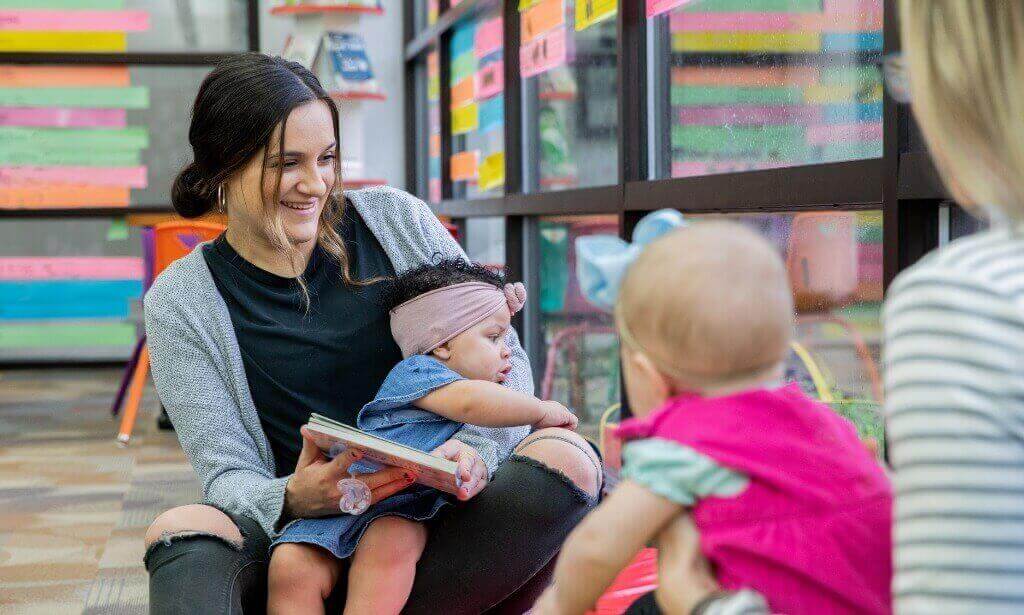
7. Read To You Baby
A significant milestone your 17-month-old is trying to hit is speaking. They learn this by hearing as many words and phrases as possible. One fun way is to talk to them continuously throughout the day, but another is reading with them.
Reading baby books to young children introduces new words to their vocabulary and stimulates their imagination. Start with very simple baby stories that have at most 100 words and pictures. I like to point at the image and tell my toddler its name. If the child has a favorite book, make sure you go back to it frequently.
Reading is also a calming activity, which is why most people do it before bed to soothe their child to sleep.
An interesting benefit of reading books is emotion recognition. As you read stories for the baby, you will come across emotions such as fear, anger, and happiness. Take the opportunity to discuss those emotions in brief with the baby so they can learn about them early.
8. Do Art and Crafts for Infants
Art has to be my favorite activity to do with my toddler, and it’s boundless. Everything from painting to coloring with crayons and modeling counts as art. Our household favorite is playing with washable finger paint. The mess it creates is massive, but everything is washable, so I do not mind.
Pour some finger paint on a plate, supply some brushes and paper and let the child create what they will. They also have permission to use their hands and feet, so we have many hand and footprints on paper over here.
My second favorite is drawing with chalk. I bought a big blackboard that sits in the play area and a pack of chalk. Kids know they cannot draw on walls, but the board is fair game, so they spend a lot of time there drawing and rubbing with a duster.
9. Include Music Activities
We have talked about music activities for infants here and their benefits. These should continue throughout the baby’s toddler years and beyond. Music is a great medium to teach vocabulary and learn about emotional regulations.
Some excellent musical activities for a 17-month-old include making musical instruments using beads and other home-bound stuff, learning nursery rhymes, watching cartoon shows with music, and actively listening to music during relaxing time.
I especially like sitting down in the afternoon with my toddler in hand and playing classical music on a CD nearby before our nap. We also play some fun music sometimes and dance our hearts out in the living room just for fun.

10. Play Simon Says
Simon says is a great activity where one person says the phrase ‘Simon says’ followed by an action command they want the other person to carry out.
For example, ‘Simon says, touch your nose.’ When you say this, your baby is supposed to touch their nose. You can do anything from jump to touch your leg to laugh. It is a great game to gauge how many words your child knows so you can teach them more.
11. Hang Out with Friends
As I said, 17 months is an interesting age. Not only is the child learning to be social, but they are also learning fear and prejudice. Your baby will love hanging out with other kids his age but also have issues sharing his toys or coil away when other adults try to come near them.
You can only get through this phase by exposing them to more people. Make a point to hang out with family and friends more, especially those with kids that age. The more they get used to other people, the more their social skills will grow, including sharing, collaboration and communication.
It will also help them stop fearing other adults as much and clinging to the mom only.
12. Play with Toys
Cause and effect. This is the primary lesson kids learn when playing with their toys, besides working on their fine and gross motor skills. When the child pulls a toy truck by the string, and it moves, they realize their actions make things happen.
Throwing balls, pushing a little car or controlling it with a remote, making dolls sit or lie down and so on are all great examples. Sit down on the floor with the child and give them instructions on what to do with the toy.
Give commands like press here, throw to me, pick this up, and push that. This will build their confidence in doing things, but it’s also a great bonding opportunity when you play with your child and their toys.
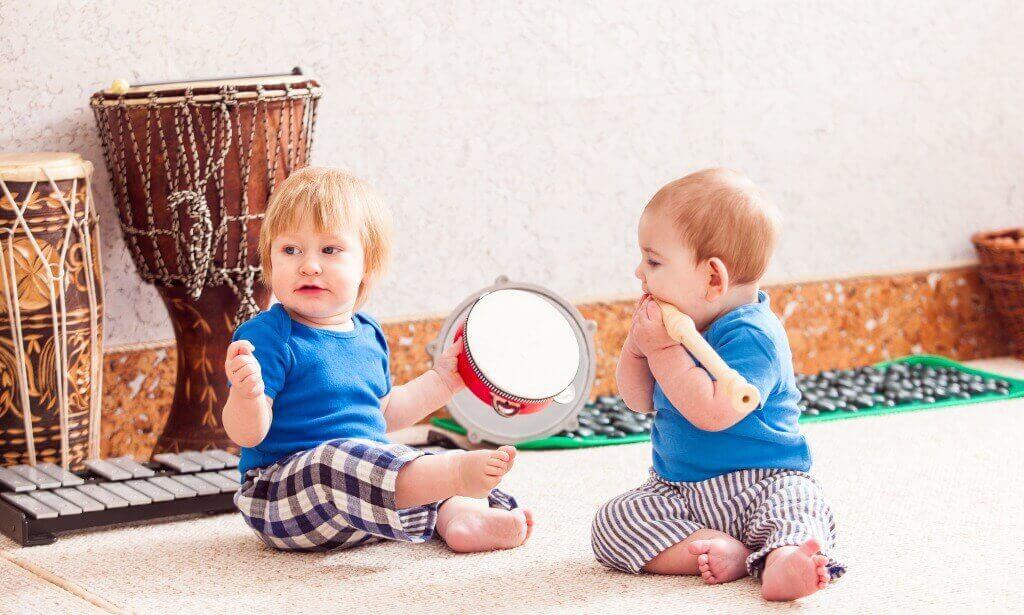
Play Tips for Parents of 17 to 18-Month-Old Toddler
The above simple activities for a 17-month-old baby are all easy to implement. However, their success in achieving the goals depends on a few tips.
Be an Active Participant
It is not enough to hand the kid balls or sensory objects and let them play. Sure, parents are sometimes busy and these activities are a great distraction for the child, so she won’t bother you. However, your active participation is vital most of the time.
Get down to the floor for some ball kicking, watch cartoons and sing songs together, plait doll hairs, and do art together. You will bond with your child more, teach them more vocabulary and provide feedback and encouragement with everything they are doing.
Don’t Force Activities
Babies go through moods just like adults. Please do not force them into an activity they are clearly resisting or disinterested in. It’s also good to observe if the child is in a playful mood before picking the activities.
Tune In to Your Toddlers Emotions
As you go about the different activities, stay tuned to how the toddler reacts throughout. Are they bored? Frustrated? Upset?
You may need to stop or change the activity. Remember, the aim of childhood activities is having fun above all else and spending quality time with the parent.
Keeping Babies and Infants Busy
All said and done, keep in mind that children develop at a different pace. Do not get upset or discouraged if your 17-month-old can’t build a castle or remote-control a toy car.
Your job is to keep teaching with as much patience and encouragement as possible and let nature take its course. But above all, enjoy playing with your kid and showering them with positive attention. That is what will matter at the end of the day.
Looking for more activities for toddlers? Check out these posts.


